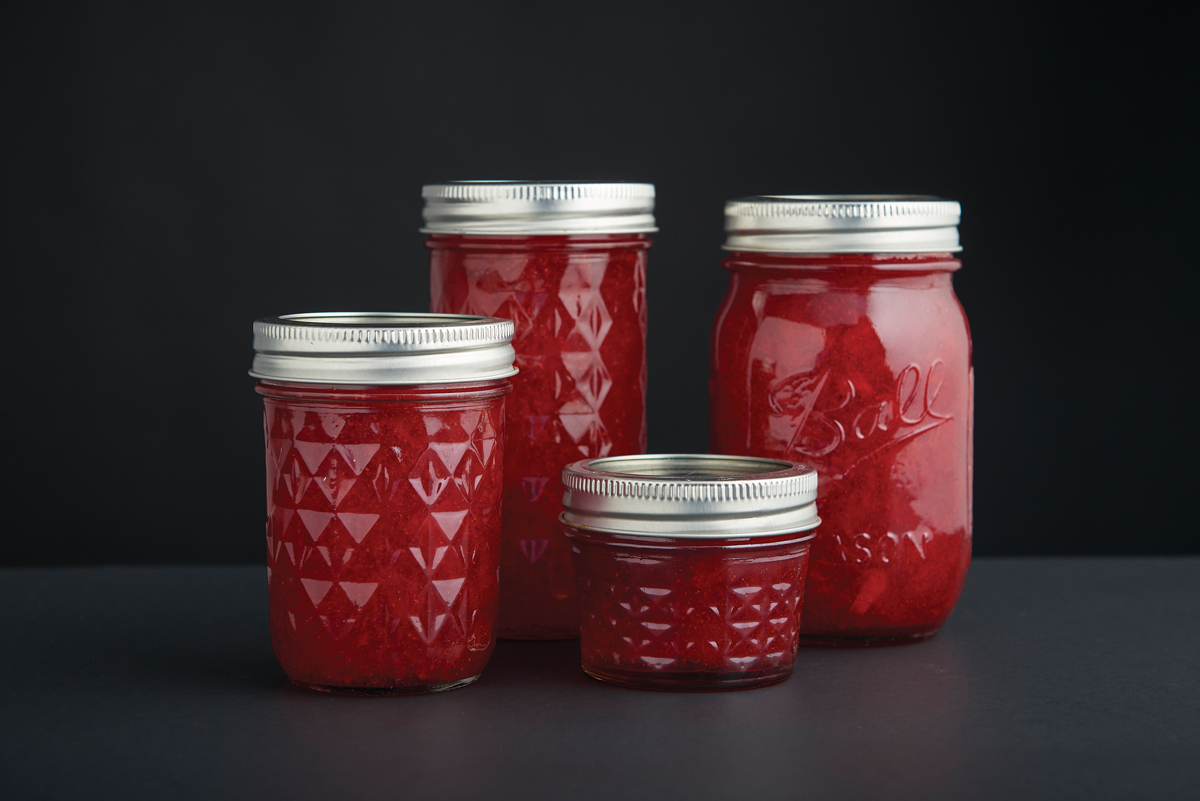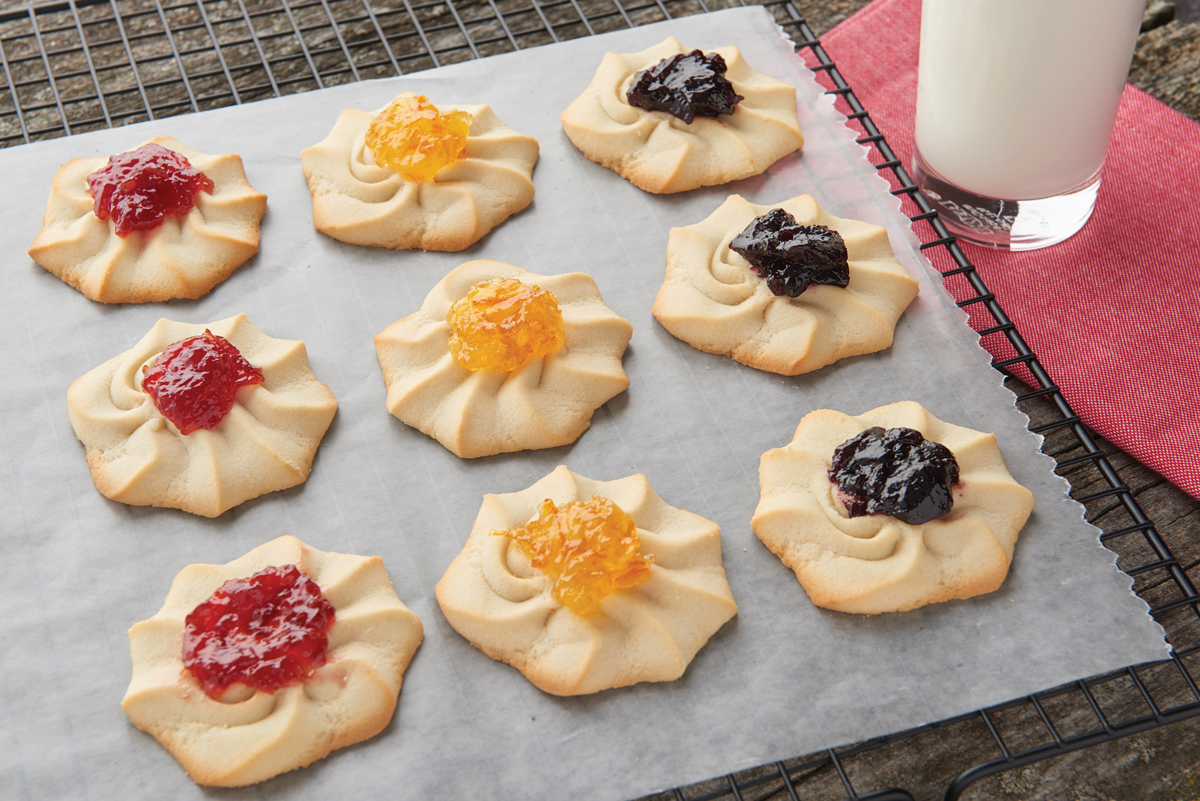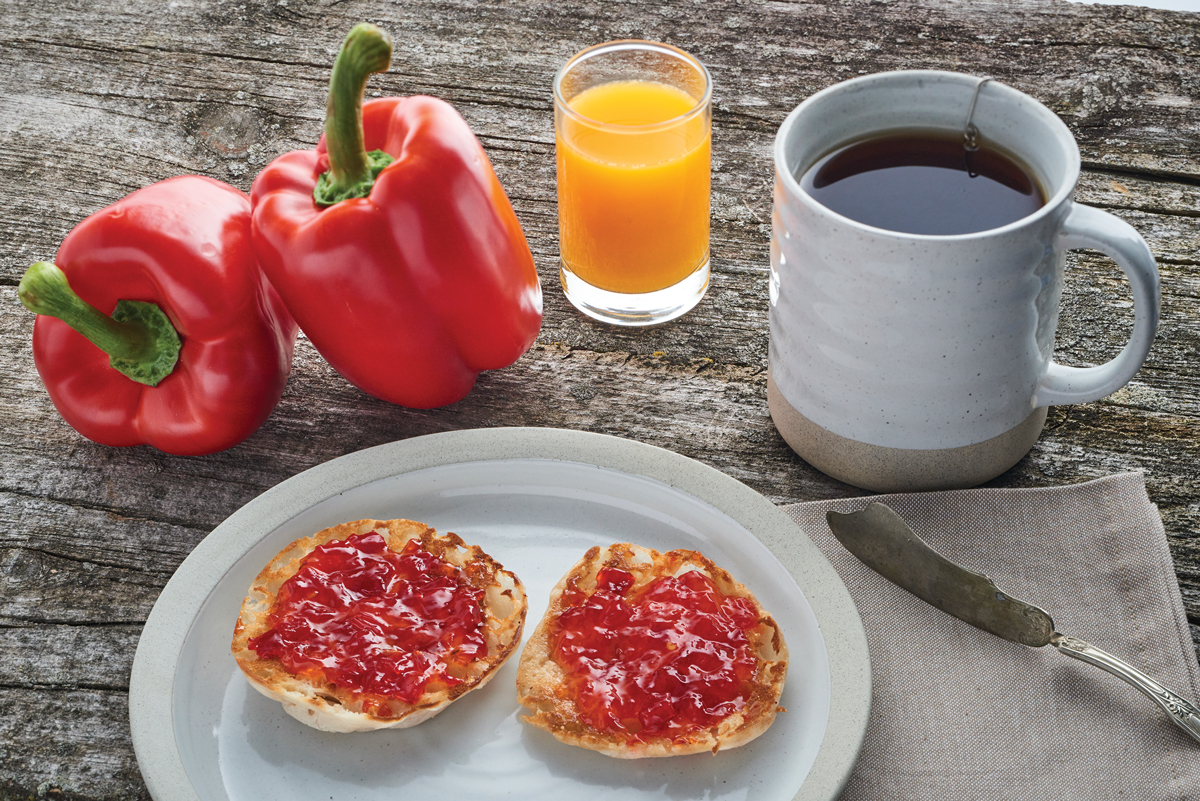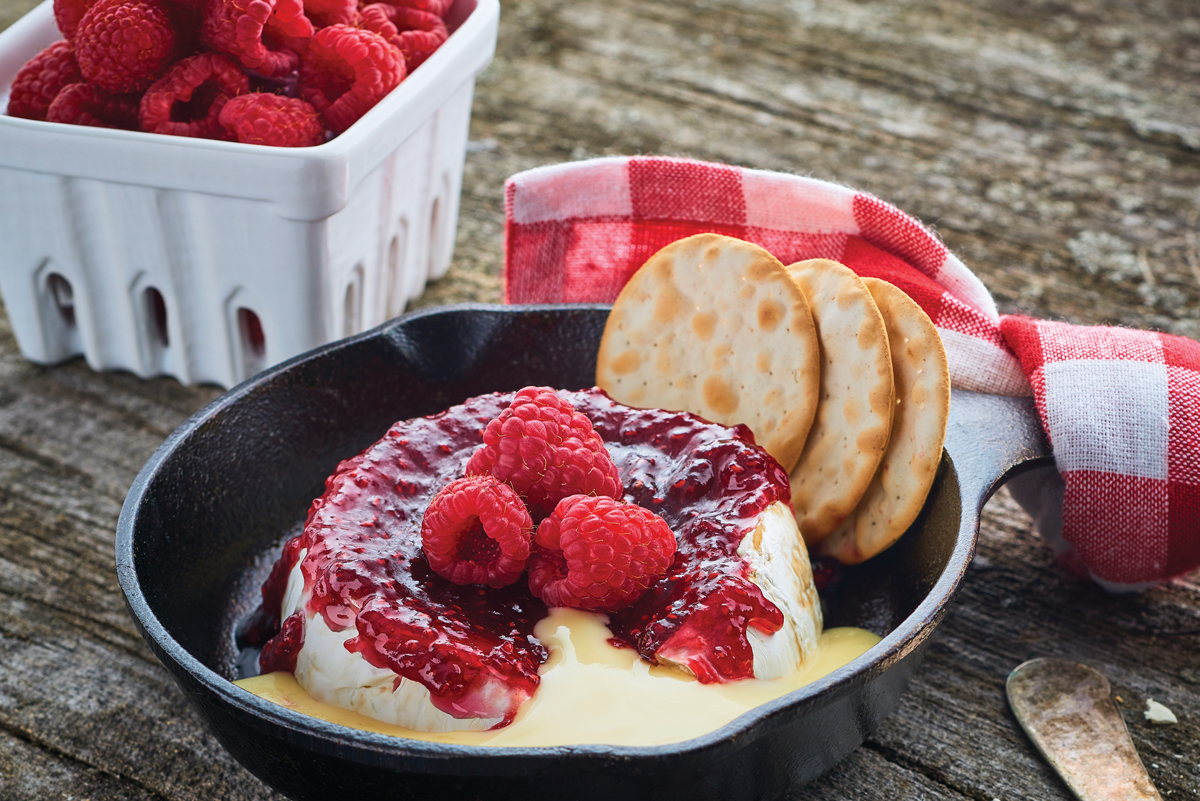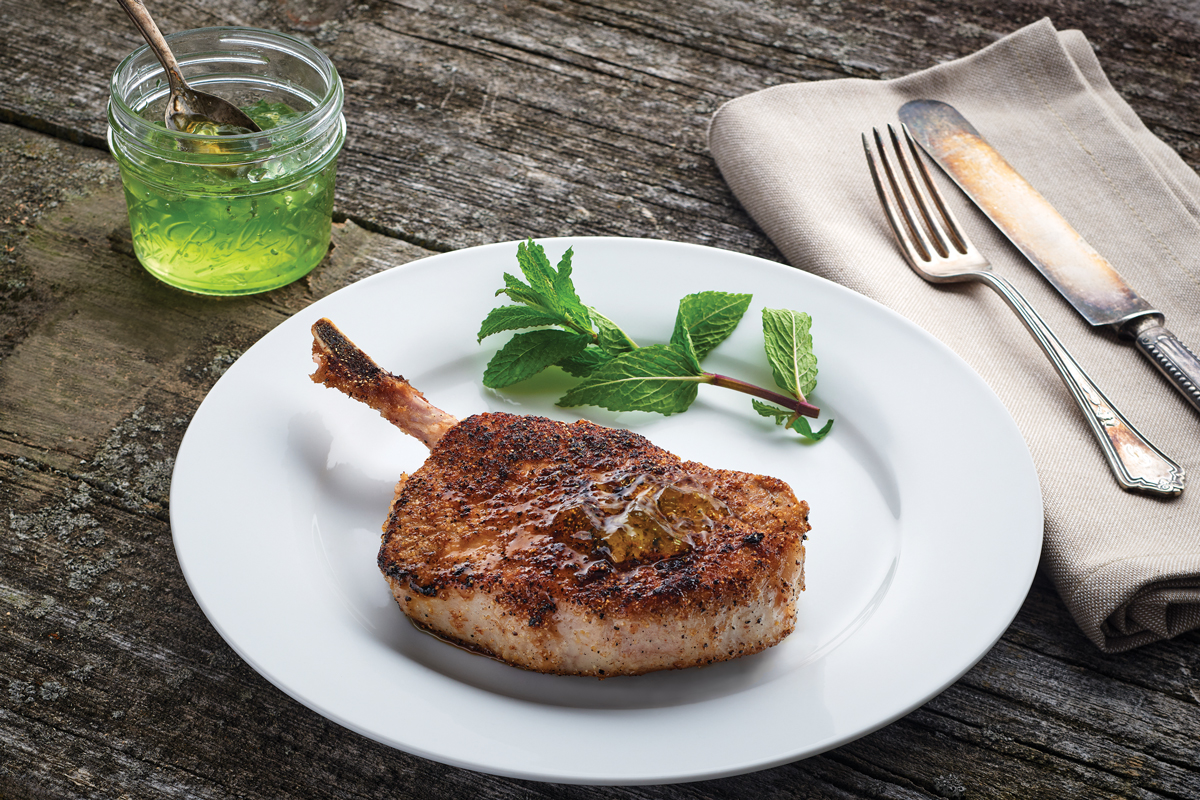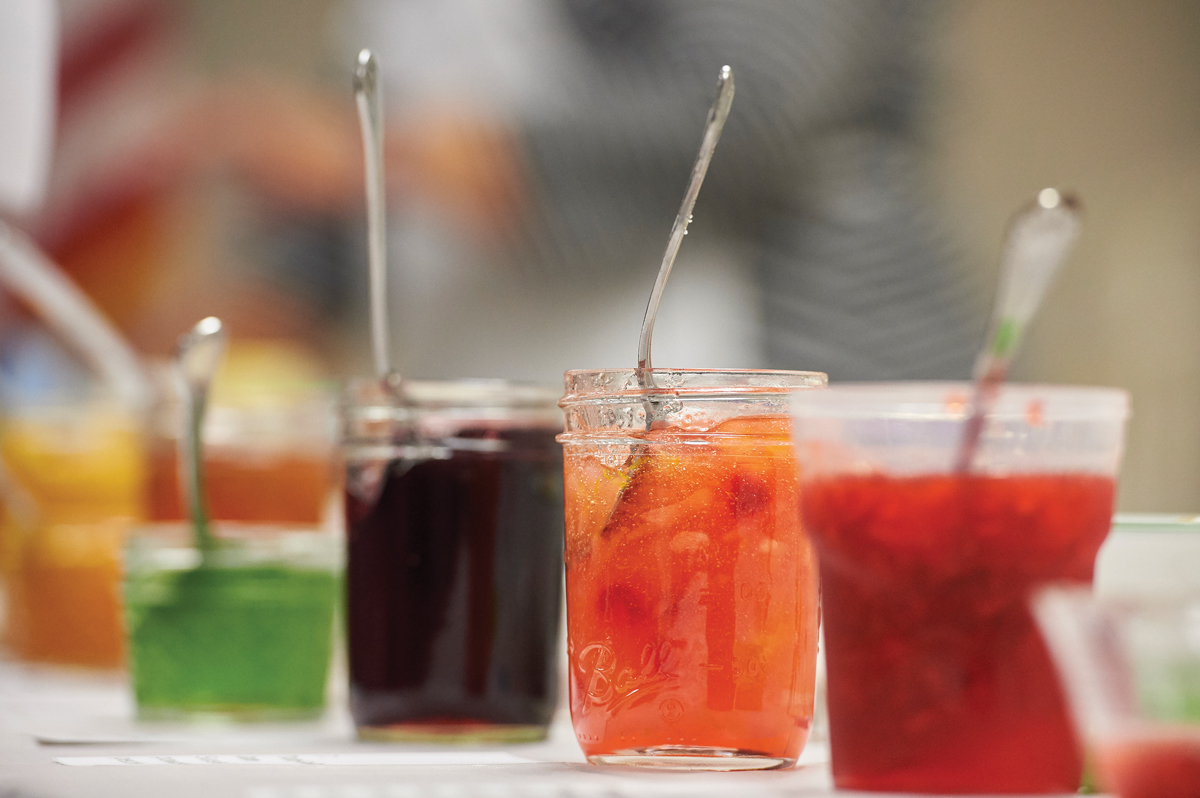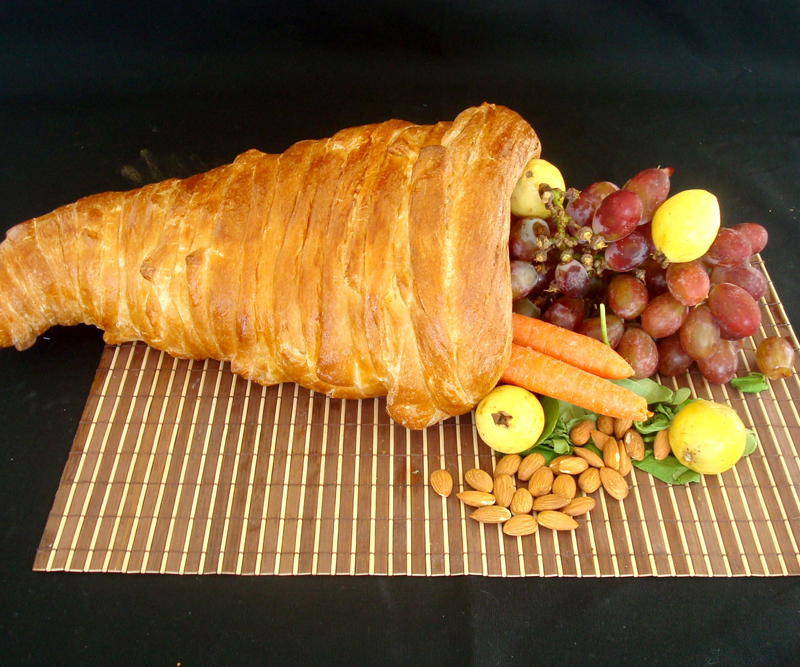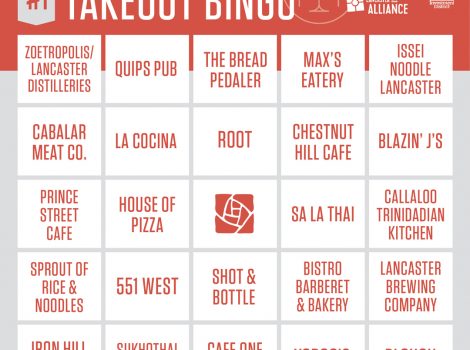Jams & Jellies
Originally from Lancaster County Magazine.
While jams and jellies are well-known for complementing peanut butter and breakfast toast, they rarely end up at center stage. However, these sweet condiments deserve a closer look at how they can be used to spice up everyday meals.
A few years ago, a dear friend of mine unexpectedly lost his stepmom. Tim affectionately referred to Kathy as his “bonus Mom,” and, as his dad had passed away years before, his childhood home would soon go up for sale. Preserved exactly as Kathy left it, Tim asked me to photograph her house while it was still a family home.
Tim’s request would be doubly meaningful. Photographs help us hold onto fading moments, keeping us connected with people and places long gone. Similarly, food can have the same effect. In Tim’s case, Kathy’s strawberry jam triggers memories.
Kathy’s Homemade Strawberry Jam
As Tim prepared to pack up the house and put it on the market, he discovered a few quarts of Kathy’s homemade strawberry jam remained in her freezer. As a thank you for photographing the house, Tim wanted to share a jar with me. A deeply moving gesture, I was both humbled and reluctant to accept. However, doing so would mean I could share in the sentiment of Kathy’s homemade jam. As such, I accepted.
Naturally, I asked Tim if he had her recipe, but the question was fruitless. It’s the same recipe my grandmother uses, the one I, too, grew up relishing. No matter how many times anyone makes Kathy’s strawberry jam, it will never be hers alone, but it will always live on as a reminder of her.
Defining Fruit Preserves
Simple foods aren’t necessarily unintentional or lacking in dimension. Understanding a food’s characteristics and subtitles can show the way forward in making use of its goodness. In the realm of jams and jellies, your choices boil down to satisfying your preferences on taste, texture and consistency.
- Jam is a thick, sweet spread made by mixing finely crushed or chopped fruits.
- Jelly relies on pectin to help it congeal.
- Preserves tend to be thinner and contain small, whole fruit such as cherries.
- Conserves are jam-like spreads that contain nuts, raisins or coconut.
- Thicker than preserves, marmalades often include a soft-fruit base, with small bits of citrus peel.
- Fruit butter is a sweet spread that is made by cooking fruit pulp with sugar or spices added. Apple butter is a prime example.
- Syrups are made by cooking down fruit juice or pulp to the consistency of honey.
- Chutneys are usually vinegar-based for a sweet and spicy spread.
Beyond the PB&J
Fishing for new pairing options, I cast a wide net. Starting with Penn State Extension, which offers a Jam and Jelly workshop, instructors Martha Zepp and Melissa Anderson spoke highly of Kitchen Kettle Village, which has increasingly been adding food-related venues to its lineup of shops. Of course, its Jam & Relish Kitchen is legendary, not only for the array of products, but also for the complimentary tastings that are always available and for the recipes the Kitchen shares.
So, I paid a visit and was taken aback by remarkable flavors. I sampled one of Kitchen Kettle’s oldest recipes, Tomato Jam, which is a juxtaposition of unexpected terms. Enough sugar will make anything sweet, and this jam begs to be paired with a grilled cheese sandwich.
Pepper Jam proved to be equally as sweet as it is robust in pepper flavor, with nominal spice to my palate.
The more traditional Red Raspberry Preserves transported me back to picking ripe berries along the neighborhood hedgerow as a boy. Orange Marmalade is as beautiful in appearance as it is in texture, with crisp, citrus flavor and beautiful rinds in suspension. Fig Balsamic Jam is bright, tart and dessert-like, similar to the filling in a fig roll.
Looking for simple ways to elevate food using jams and jellies is pretty sweet and provides a solution to quickly step up appetizers or prepare last-minute snacks. Tart jams are exceptionally flexible for bland to sweet baked goods and rich, creamy foods. For example, one night while taste-testing for ideas, I added apricot jam to cold bits of brie and nearly ate half the wheel of cheese. Knowing it would be far better prepared warm, I switched to red raspberry preserves, which paired perfectly with the creaminess and fat content of the melted brie.
Mint jelly was a real curiosity. I was told it pairs well with lamb, so I put it to work with another recent obsession: 1-inch-thick pork chops from Farmersville Butcher Shop. Seasoned with Bad Byron’s Butt Rub and a dusting of cornmeal, the pork chops were fantastic served with the homemade mint jelly made by Martha (Zepp). Was it necessary? Perhaps not. But better? Absolutely!
Tips for Jamming Out at Home
Going beyond last September’s conversation on canning, here are a few tips to keep in mind when making your own jam and jelly. Special thanks again to the folks at Penn State Extension for sharing their science-based processes with our community.
For those of you who are still mulling over the idea of learning to can food, jams and jellies are the perfect place to begin. The costs are fairly negligible, especially once you’re set up with the basic materials. While the per-unit costs are similar to what you might pay in a store, here you’re able to control the quality of the fruits used and the quantity of ingredients (such as sugar).
When using Ball Mason Jars, ensure they are designated for preserving food and, if necessary, denoted as freezer-safe. “Storage” or “craft” jars are definitely not made for preserving, as they’ll crack under pressure and at high heat. Quart containers and Ball plastic jars with screw-on lids are better options for freezing.
Foods with high sugar content are treated as “high acid.” However, pumpkin butter can’t be canned, only frozen, as it’s a sweeter yet low-acid food.
If you finish with an extra half of a jar, put it in the fridge and use it first. A half-full jar doesn’t have the right amount of headspace to seal.
As with all canned food, jams and jellies should be stored in a cool, dark place.

The simple process of picking your own berries for making jam can serve as an excellent teaching tool, helping children or grandchildren understand the value of food and the time poured into preparing it.
The finished product makes for gifts for holidays, special occasions and gatherings. It far outshines something that’s store bought. Besides, isn’t the shared memory of eating the fruits of our labor the sweetest treat of all?
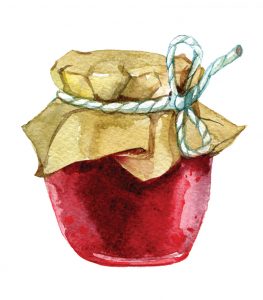 Kitchen Kettle Village
Kitchen Kettle Village
3529 Old Philadelphia Pike, Intercourse
1-800-732-3538 • Kitchenkettle.com
Ripe for the Picking:
Shenk’s Berry Farm
911 Disston View Dr., Lititz
717-626-6194 • Shenkberryfarm.com
Weaver’s Orchard
40 Fruit Lane, Morgantown
610-856-7300 • Weaversorchard.com
Cherry Hill Orchards
400 Long Lane, Lancaster
717-872-9311 • Cherryhillorchards.com
Brecknock Orchard
390 Orchard Rd., Mohnton • 717-445-5704 • Brecknockorchard.com
Myers Strawberries
1429 Auction Rd., Manheim • 717-653-1259 • Facebook.com/myersstrawberries

